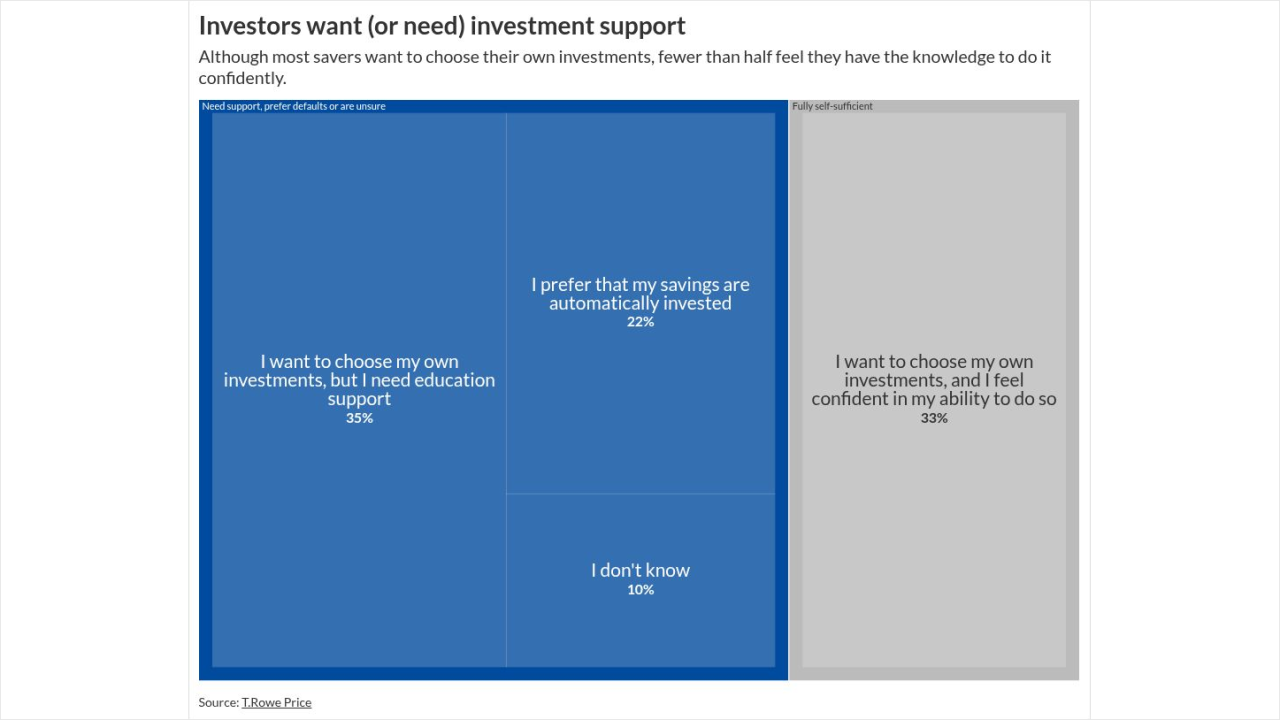Financial planning involves a lot of elements. For a growing share of advisors, managing investments isn't one of them.
The use of mutual fund wrap programs — a unique type of fund that allows planners to essentially buy a prepackaged portfolio for their clients — has increased in popularity over recent years, according to a survey of 195 financial advisors in the Financial Planning Association's annual
Since 2020, use of the wrap programs among planners has increased 20%, up six percentage points overall.
Advisors say the increased use of wrap programs reflects the broader industry trend in which a growing share of planners "outsource" the investment management of their clients' funds.
READ MORE:
"I think the industry has been really telling and pushing advisors towards basically outsourcing the investment management and focusing on the bigger picture of holistic financial planning," said Kashif Ahmed, president of American Private Wealth in Bedford, Massachusetts. "And so you have all of these so-called strategists, you know, mutual fund companies, Vanguard, they say, 'Well, listen, we'll build the models for you, just give it to us and we'll trade them, we'll rebalance them, etc.' That way, the advisor themself is not doing [the investment management], and maybe they're focusing on other areas of financial planning."
At the same time that wrap programs have grown in popularity, non-wrap mutual funds have seen a decline in use among planners.
Ken Nuttall, chief investment officer at Blackdiamond Wealth Management in New York City, said that these
ETFs often offer a similar basket of assets as many non-wrap mutual funds, with added flexibility and lower costs. For advisors who handle investments in-house, that's a big reason to abandon mutual funds. But for advisors who would rather focus on other aspects of financial planning, wrap programs specifically remain an appealing option.
"Some people just don't fully appreciate how investments work," Nuttall said. "I'm not trying to knock them down or anything, but they say 'I want to invest in stocks, but I have no idea which stocks to invest in,' Which is fine, just get someone who does know."
Convenience comes at a cost
Still, the added convenience of such programs can come at a cost to clients. Wrap fees normally range anywhere from 1% to 3% of the assets under management. That fee often includes the costs of an additional advisor from the mutual fund company.
In those cases, a client could end up essentially paying for two separate advisors: one fee to their primary advisor and another as part of the wrap fee to the mutual fund company.
READ MORE:
"You're definitely paying the mutual fund fee, and then you're paying the advisor's fee, and hopefully the advisor's fee covers other stuff they're doing for you," Ahmed said. "But typically, what would happen is with a wrap program, you should have the cheapest share class. So if there's a retail share class out there that costs, I don't know, 1.5%, and then they have an institutional share class, that's probably what's going to get used inside of the wrap account, not the more expensive one you can buy on your own."
Nuttall pointed out that while paying two advisors may sound redundant, in practice, there's not a lot of overlap in the services they provide. While a client's primary advisor is focused on creating a holistic financial plan, the mutual fund advisor is solely focused on investment performance.
Wrap programs can create layers of fees
The potential fees don't end there. Along with the blanket AUM fee, wrap programs often invest client money into funds that bring fees of their own, Ahmed said.
"When you hand it off to XYZ mutual fund companies … they're obviously going to use their in-house products first and for the majority of the model," Ahmed said. "And every now and then, I'll see that they'll throw a competitor's mutual fund in there, just so they can say, 'Well, it's not just all our stuff.' But it's not always the case. A lot of the time, it is [all in-house funds]."
READ MORE:
"I suspect a lot of the time these mutual fund companies, because they're getting these assets, they probably figure, 'Let's put in mutual funds that don't actually gather the assets on their own. You know, maybe people aren't actively buying this particular fund, but if we put it in our model, then that will ensure that it gets assets in it,'" Ahmed added.
While the FPA's data doesn't provide any indication of the types of advisors utilizing wrap programs, Nuttall said broker-dealers are more likely to buy into these programs
"It's kind of the way those broker-dealers get paid, is that 25 basis points or whatever through the 12b-1 fee. Yeah, part of that does go






